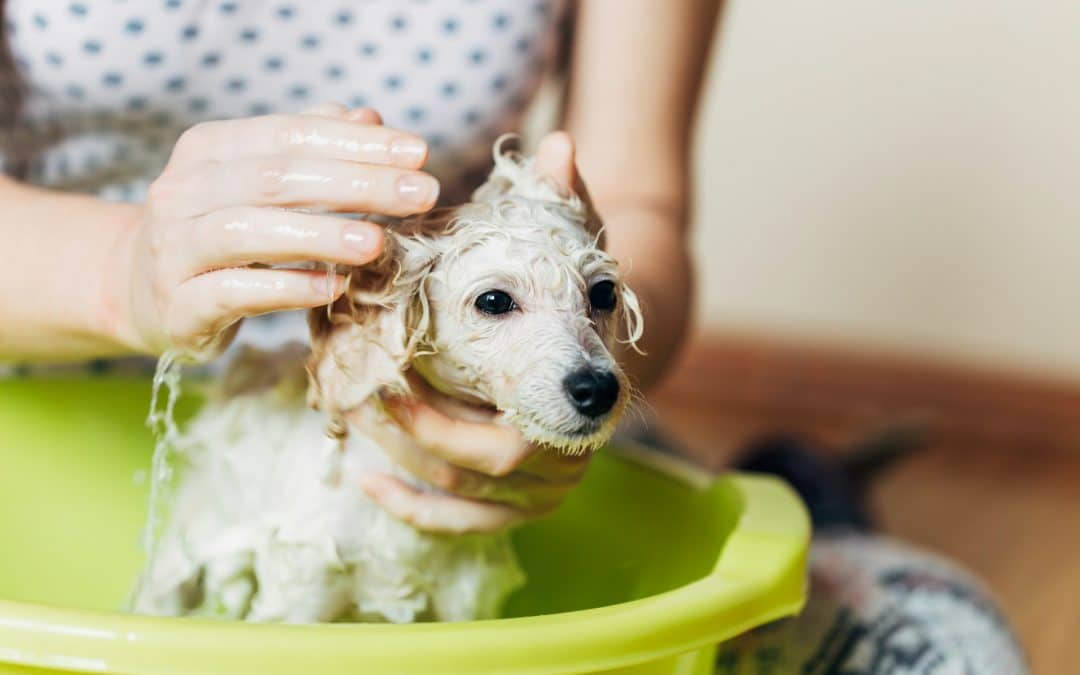Winter grooming does more than just keep your dog looking neat. It plays a real part in protecting their paws from the rough conditions outside. Cold air, snow, ice, and road salt can take a toll on your dog’s feet, even during a simple walk around the block. Without the right care, your dog could end up with sore, cracked, or dried-out paw pads that make each step uncomfortable.
Grooming during cold weather gives you a chance to check for damage and prevent problems before they start. Keeping the paws clean, trimmed, and properly moisturized adds a layer of protection your dog will appreciate. If your dog spends any time outside in colder months, regular grooming becomes more than a chore. It becomes part of their winter wellness routine.
Understanding Cold Weather Challenges For Paws
The cold presents a few serious challenges for a dog’s paws, especially during late fall and throughout winter. The paw pads have a natural toughness, but they’re still skin, and they can easily dry out in harsh weather. When this happens, your dog might start licking their feet more often or limp after being outside. In some cases, cracked pads can even bleed.
Besides the temperature itself, salt and de-icing chemicals are a big issue. These products are common on sidewalks and driveways around Nashville but often go unnoticed until a dog walks across them. These substances can burn or irritate the paw pads, and if licked, can cause stomach problems or more. On top of that, snow and ice can build up between the toes, clump into fur tufts, and pull on the skin.
Common signs of winter-related paw trouble include:
– Dry or rough pads that feel like sandpaper
– Cracking at the edges of the paw pads
– Redness or irritation between the toes
– Excessive licking or chewing on the feet
– Limping or refusing to walk on cold surfaces
If your dog shows any of these signs, it’s worth reassessing their paw care routine. Addressing these issues during grooming helps spot problems early and ease discomfort so your dog can stay active and comfortable all season.
Preparing For Cold Weather Grooming
A little prep work can make grooming during colder months much easier and safer for your dog. Paying attention to parts of the paw that often get overlooked can help reduce ice buildup and prevent injury.
Here are a few helpful grooming tips that focus on cold weather prep:
1. Trim the fur around the paw pads
Long fur around a dog’s paws can trap ice and snow, which then clumps up and pulls. Keeping it trimmed short helps stop that buildup and also makes it easier to clean their feet after walks. Make sure the fur is even with the pads and that the space between the toes is clear.
2. Use a dog-safe paw balm or moisturizer
These products help create a barrier between your dog’s skin and the cold or salt outside. Balms can help prevent drying and cracking and should be applied after walks or before heading out the door. Be sure the product is dog-friendly and non-toxic since most pups will lick their paws at some point.
3. Check nails and keep them short
Longer nails force your dog’s toes to spread when walking, which exposes areas between the toes to colder temps and salty slush. A regular nail trim helps avoid this and gives them better traction on icy surfaces.
The idea is to keep everything neat and protected without overdoing it. You don’t want to trim fur or nails too short, as that could cause sensitivity. Think of it the same way you’d prepare to go outside in cold weather. You layer up and stay dry. This is just your dog’s version of that.
During The Grooming Session
Once grooming begins, the key is to keep things simple and safe. Cold weather puts extra stress on your dog’s skin and paws, so extra care is needed during winter grooms. One of the biggest mistakes people make is using water that’s either too cold or too hot. Lukewarm water works best. It keeps your dog comfortable and avoids shocking their skin or drying it out even more.
When washing their feet, check between the toes for any stuck debris like small clumps of ice or rock salt. These often go unnoticed but can irritate the skin or lead to infection if left too long. Be gentle not just in how you wash but in how you handle their paws. Paws are more sensitive during winter, especially if they’re already dry or red.
Drying matters just as much as washing. Use a towel instead of high-heat blow dryers unless your dog is already used to one. Heat can dry out paw pads more. As you dry, give each foot a close look. Is there cracking? Red spots? Bleeding or swelling? These are signs you may need to hold off on longer walks or playtime outside for a couple of days.
During the session, finish with a paw balm to rehydrate the pads. Apply it like you would a hand cream—just enough to add moisture, not so much that they’ll slide across the floor. You’ll want to give your dog a few minutes to let it soak in before heading back outside. One helpful trick is giving them a treat while they relax to stop the urge to lick off the balm right away.
Post-Grooming Winter Paw Care
Once your dog’s grooming session is done, care for their paws doesn’t stop there. Think of grooming as the check-in. What comes after helps maintain the work that was just done. Winter weather in Nashville can be unpredictable, swinging from dry chill to icy sleet fast. That puts stress on even a freshly groomed pup.
Try to get in the habit of inspecting your dog’s feet after every outing, especially when there’s snow or road treatments around. Rinse their paws with lukewarm water or wipe them down with a damp cloth to remove salt or chemicals. It’s a quick step, but it keeps unwanted residue from drying out or irritating their skin.
Keep paw balm on hand for regular application, using it at least once per day during the coldest weeks. Some dogs may need it more often, while others do well with every other day. You’ll know by checking how their pads feel. If they’re smooth and supple, you’re likely keeping a good routine.
If you notice repeated issues like cracking or redness, don’t ignore them. Some dogs struggle more in cold months, just like some people do with dry hands. Watch for signs like increased licking or limping after walks, and consider shorter outings or boots if needed. Every dog is different, so how they respond to cold grooming and care might change over time.
Helping Your Dog Stay Comfortable All Winter
Cold weather grooming isn’t about pampering. It’s about protecting a part of your dog that takes on the biggest hit during winter walks, their feet. Paw pads handle ice, salt, wet ground, and freezing temps almost daily, and giving them support helps avoid long-term damage or pain.
Keeping nails trimmed, fur tidy, and skin moisturized gives your dog the best shot at making it through cold months without cracked paws or limping. Consistency is what matters most. One grooming won’t do it alone. Regular maintenance and close attention to the small details help keep paws healthy even when conditions outside aren’t.
A healthy paw routine sets your dog up for more comfortable walks, safer play, and better overall movement. While winter in Nashville may not be the snowiest, the weeks of ice, frost, and salt can sneak up and take a toll just the same. Stay ahead of it with prep, care, and ongoing check-ins. Your dog’s paws will thank you.
Keep your dog feeling their best this season with regular care from The Dog Spot. From dry paw pads to extra shedding, winter brings plenty of changes. Explore our dog grooming options to help your pup stay clean, comfortable, and ready for every chilly walk.

